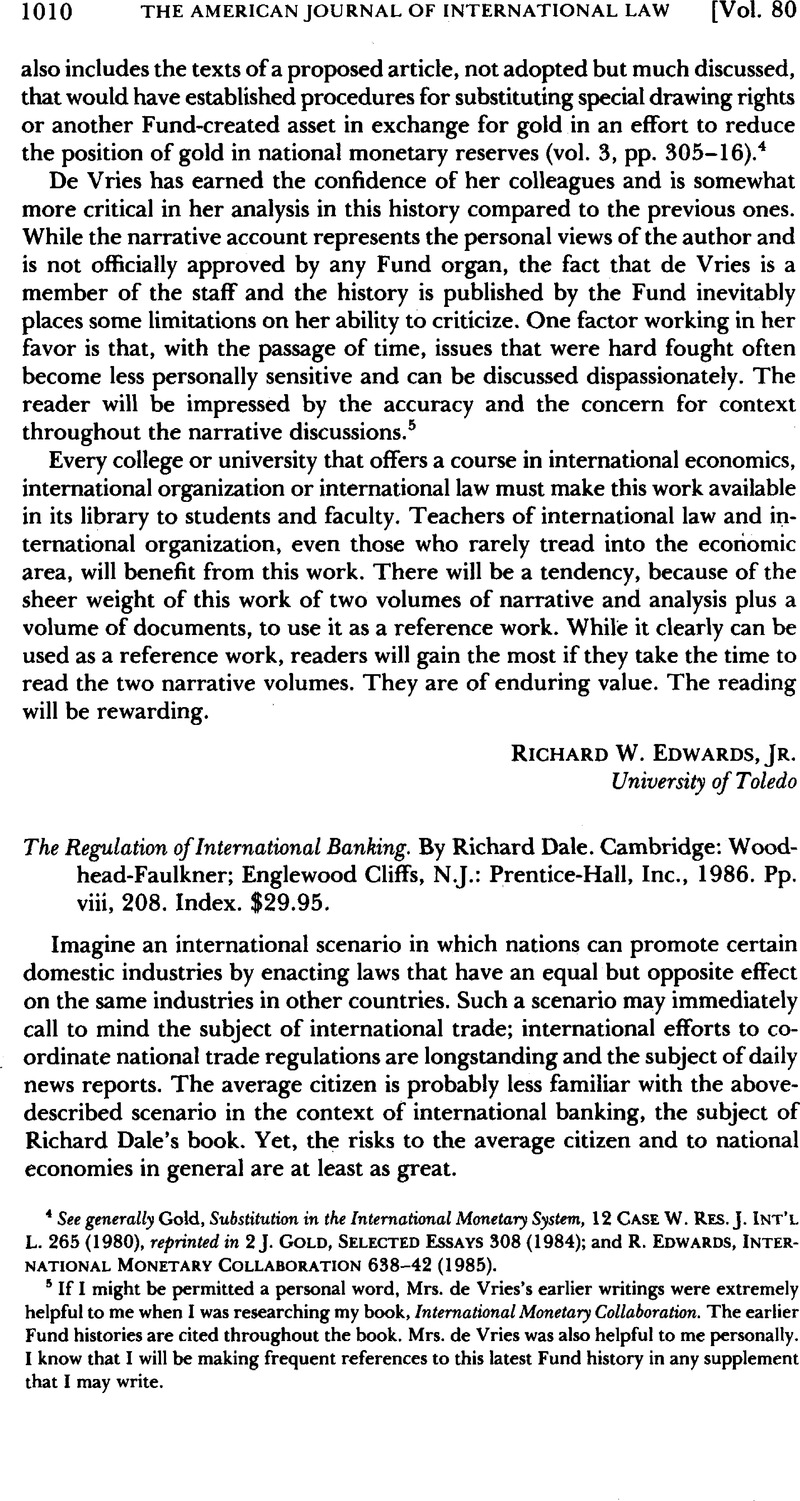No CrossRef data available.
Article contents
The Regulation of International Banking. By Richard Dale. Cambridge: Wood-head-Faulkner; Englewood Cliffs, N.J.: Prentice-Hall, Inc., 1986. Pp. viii, 208. Index. $29.95.
Published online by Cambridge University Press: 27 February 2017
Abstract

- Type
- Book Reviews and Notes
- Information
- Copyright
- Copyright © American Society of International Law 1986
References
1 As described by Arthur Burns, F., former Chairman of the U.S. Federal Reserve Board. Seep. 181 Google Scholar.
2 Furthermore, Dale states: “[T]he explosive growth of multinational banking is tending to out-distance the individual capabilities of national regulatory authorities” (p. 175).
3 The country studies cover Belgium, Canada, France, Hong Kong, Italy, Japan, Luxembourg, the Netherlands, Singapore, Switzerland, the United Kingdom, the United States and West Germany.
4 “[P]reventive regulation [is] designed to curb risk-taking by banks and thereby reduce the likelihood of liquidity and solvency problems; and protective regulation [is] designed to provide support to both banks and their depositors should problems in fact arise” (p. 55).
5 Eurocurrency markets are “markets in currencies deposited outside their country of issue” (p. 2).
6 “[I]t is paradoxical that investors should be prepared to lend indirectly via the international banking system to countries they would not consider lending to directly” (p. 11).
7 In addition to the countries listed in note 3 supra, Dale briefly describes the degrees of regulation in Australia, the Philippines, Taiwan, Bahrain and the Caribbean offshore centers of Panama, the Bahamas and the Caymans.
8 “There is an information gap that needs to be closed through the provision of more comprehensive and timely data on country indebtedness than currently exist” (p. 86).
9 Reprinted in appendix 1, at 188–94.




